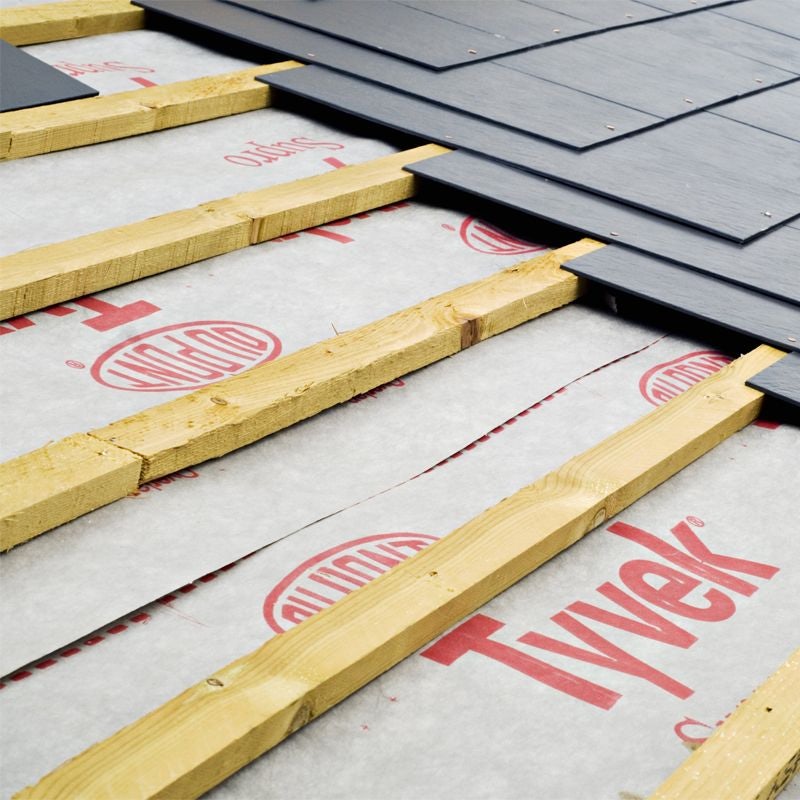When renovating an existing building or constructing a new build with a timber framework, timber frame breather membranes are incredibly useful, helping to protect the frame during construction but also keeping the building insulated and dry once finished.
Here at Insulation Superstore, we have a number of different timber frame breather membranes available from popular high-quality brands such as DuPont Tyvek and Novia.
But before we get there’ let’s take a closer look at what exactly a timber frame breather membrane is and how to install a breathable roof membrane.
Table of contents:
- What is a breather membrane?
- How does breathable membrane work?
- What is a timber frame breather membrane?
- How to measure for breathable membrane
- How to fix a timber frame breather membrane
- Final thoughts
What is a breather membrane?
A breather membrane is a sheet of material that is installed to the outer side of insulation on both roofs and walls. It allows water vapour to pass through from the inside of the roof or walls, without requiring any ventilation to be installed directly above the insulation layer.
Additionally, breather membranes also prevents any form of water, whether it is moisture, surface water or rainwater, from entering the roof or interior space.
How does breathable membrane work?
Breathable membranes are water-resistant, snow-resistant and dust-resistant. They are air-permeable, too, which separates them from typical membranes.
You would normally use a breathable membrane within external walls or roof structures. Areas in which the exterior cladding may not be completely water-tight or moisture-resistant. This could be anything from tiled roofs to framed wall constructions.
On a typical installation, you’ll find the membrane on the cold side of the insulation. This is how it will prevent moisture from piercing further into the structure, especially if it’s been getting through the external cladding.
Having said that, their air permeability works as a vent for the structure. This avoids the accumulation of condensation.
Breathable membranes also act as a secondary layer of protection. This helps prevent external environmental impurities like dirt and rain. Stopping them from entering the structure and causing damage.
If you used no membrane, the water would condensate and begin dripping down through the structure. Over time, this would weaken the structure and make it look unappealing. It would also cause damp problems further down the line.
Additionally, you can use breathable membranes to improve a structure’s thermal properties. This is because they provide short-term protection, particularly from adverse weather conditions during essential construction or repair works.
What is a timber frame breather membrane?
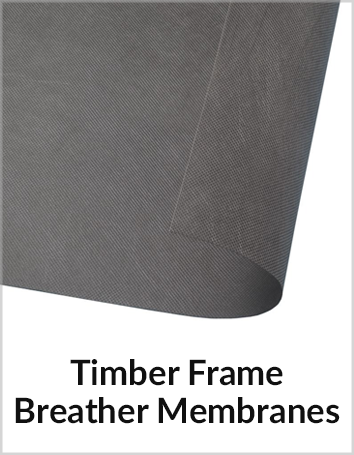
Breather membranes are commonly used on timber frame buildings to provide extra protection against weather conditions as well as moisture within the building. Timber frame breather membranes have been manufactured specifically for application onto timber frame buildings.
So, they are lighter and thinner than a normal breather membrane, allowing for easy installation vertically as well as horizontally, meaning that they are suitable for both walls and roofs.
What’s more:
Timber frame breather membranes are commonly used during the construction process to protect the building and the frame whilst construction occurs. They can be left uncovered for several months without any issues arising, making them the perfect covering whilst the rest of the construction process occurs.
Additionally, they help to seal the walls of the building, reducing heat loss, as they are installed on the outer side of the insulation, which creates an extra barrier and helps to save on annual bills and energy consumption.
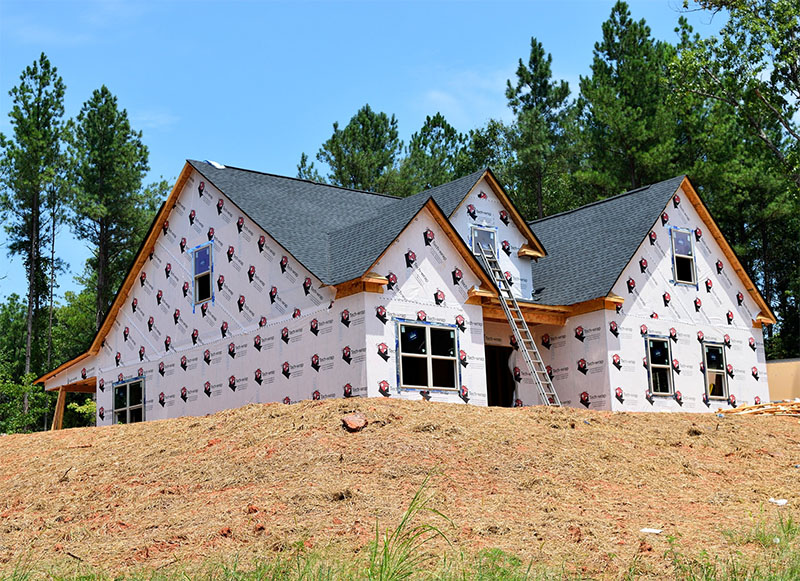
How to measure for breathable membrane
You’re familiar with breathable membrane. So, how do you measure it?
Well, use our size and measuring guide for your breathable membrane project to find out how much you need.
How to fix a timber frame breather membrane
Overlaps
When fixing a timber frame breather membrane, it can be fitted horizontally or vertically, depending on whether it is being installed on the wall or the roof.
Regardless of the application of the timber frame breather membrane, there should always be an overlap between membranes.
At this point, you’re probably wondering:
How much should the roof membrane overlap?
Here’s the deal:
On wall applications the upper layers should overlap the lower layers by at least 100mm, on pitched roofs, ensure the overlaps are up to 200mm, and even up to 300mm around valleys and hips, to ensure that water falls away from the breather membrane.
This will not only help to protect the membrane from water but also protect the timber structure because if exposed to high levels of moisture, rot and degradation can occur which could have serious structural ramifications.
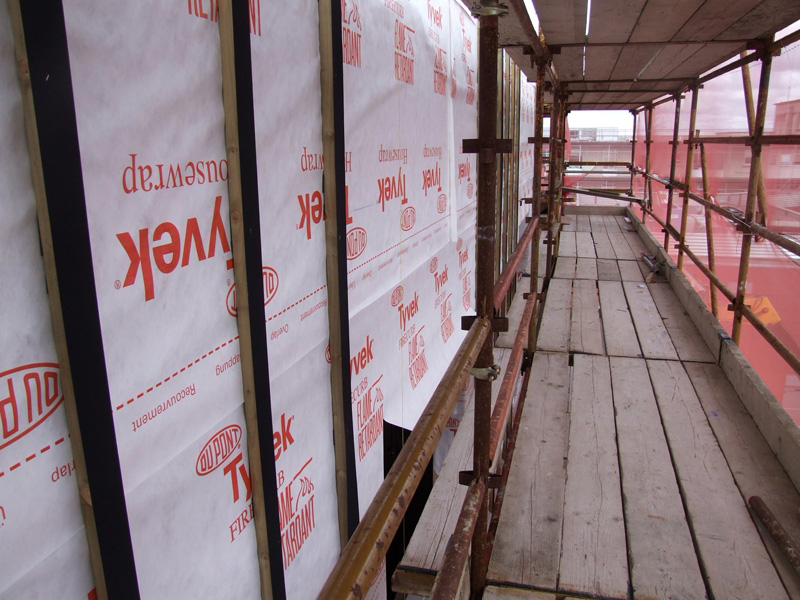
Fixings
When fixing the breather membrane to timber frames, it is recommended to use nails or staples – try to use galvanised stainless steel if possible. Fix the membrane at regular intervals to the timber frame to ensure stability and security.
Before stapling or nailing the timber frame breather membrane, it is important to mark where the timber frame is – this will help to ensure the fixings go into the frame securely. These marks will also help ensure that wall ties and battens are fixed securely later on in the construction process.
Final thoughts
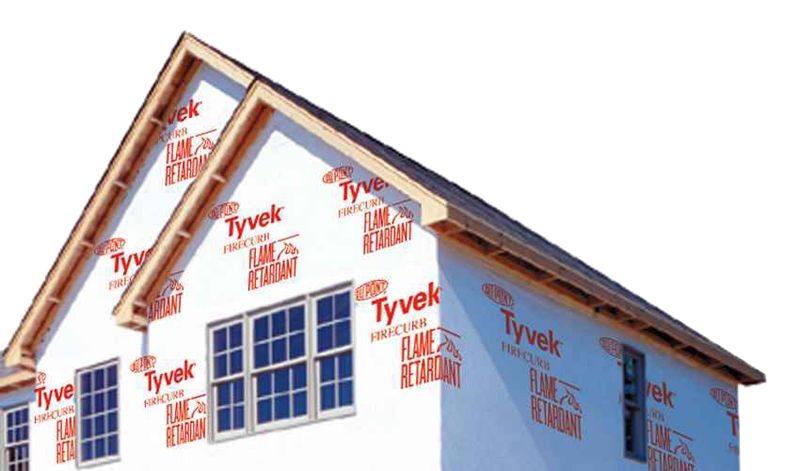
Breather membranes offer several advantages in construction projects.
Primarily, they serve as a protective barrier against moisture ingress while allowing vapour to escape from within the building envelope, which prevents the buildup of condensation and potential mould growth. This feature helps maintain the structural integrity of the building by preserving insulation effectiveness and preventing timber decay.
Additionally, breather membranes contribute to energy efficiency by reducing heat loss through the building fabric, enhancing thermal performance and potentially lowering heating costs.
What’s more:
They act as a secondary defence against wind-driven rain and dust infiltration, enhancing the longevity and durability of the structure.
Fixing a timber frame breather membrane is a relatively straightforward process, but it requires attention to detail and careful handling to ensure proper installation.
While not overly complex, proper installation is crucial for ensuring effective moisture management and insulation in the timber frame construction.


